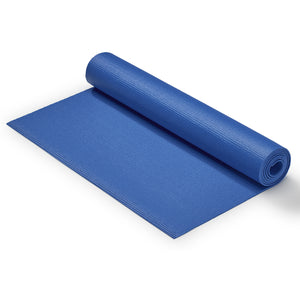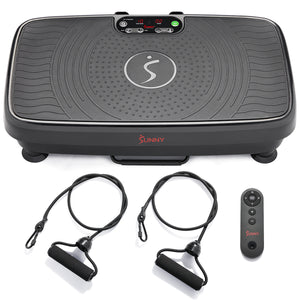From the moment we wake up to the moment we lay our heads to rest, we are bombarded with responsibilities, deadlines, and distractions that can leave us feeling overwhelmed and drained. Amid the chaos, finding moments of peace and clarity can seem like an impossible task. However, there is a simple yet powerful technique that can help us navigate the tumultuous waters of modern life: micro meditation.
What Exactly Is Micro Meditation?
In essence, it is the practice of taking short, intentional breaks throughout the day to pause, breathe, and center ourselves in the present moment. Unlike a traditional meditation session that may last anywhere from 5 minutes to an hour and require a dedicated space, micro-meditations can be described as moment-to-moment meditations.
Micro meditations involve brief periods of reflection that can last as little as a minute or two. According to the practices within the Buddhist tradition meditating is “training oneself…(in) seeing what is there”.(1) We practice present noticing, instant to instant, “allowing us to become aware of the unfolding of singular lived experiences.”(2) These moments of mindfulness can be practiced anywhere, anytime, and can be seamlessly integrated into daily activities, making them accessible to even the busiest individuals.
The beauty of micro-meditation lies in its simplicity. You can integrate mindfulness into your daily routine with minimal effort. Whether it's taking a few deep breaths before a meeting, closing your eyes for a moment of quiet contemplation during a hectic day, or simply tuning in to your senses while sipping a cup of tea, micro meditation invites us to slow down and reconnect with yourself and the present.
Does Micro Meditation Actually Work?
Studies have shown that even just a few minutes of mindfulness practice each day can have profound effects on our mental and physical well-being.(3) From reducing stress and anxiety to improving focus and cognitive function, the benefits of micro-meditation are both immediate and long-lasting.(4, 5)
One of the best parts about micro-meditations is that it requires very little time. Participating in an extended meditation often takes planning and some motivation to start. For many people starting and staying consistent are the greatest barriers to success. Sustaining positive health behaviors, like eating clean foods, sticking with a workout routine, or practicing meditation, can be difficult over the long-term. According to one study, 65% of a group of adults who initiated a meditation practice for the first time, had “failed to maintain this practice 15 months later”.(6) Similar studies that observed adults who initiated a physical activity regimen were found to “fall off in comparable numbers: six months later, 64–80% were not physically active”.(7) While people have the best intentions when they initiate new health behaviors “failure to sustain desired positive health behaviors in the months ahead appears to be the norm.”(8) Micro meditations take little motivation and are easily integrated into everyday life.
Perhaps most importantly, micro-meditation is a reminder that you don't need to wait for the perfect conditions to practice mindfulness. You don't need a quiet room, a meditation cushion, or an hour of free time. All you need is a willingness to pause, breathe, and be present, even if it's just for a few moments to find peace, clarity, and resilience that is always present and available for the taking.
What Are the Benefits?
One of the key advantages of micro-meditation is its ability to combat the effects of chronic stress.(9) In today's hyper-connected world, many of us are constantly bombarded with stimuli that trigger our body's stress response. This perpetual state of arousal can take a toll on our health, leading to a host of issues such as high blood pressure, weakened immune function, and even depression.(10) By taking regular breaks to engage in micro meditation, we can activate our body's relaxation response, counteracting the harmful effects of stress and promoting a greater sense of calm and well-being.
Moreover, micro-meditation can also help you cultivate greater self-awareness and emotional resilience.(11) By tuning in to your thoughts, feelings, and bodily sensations in the present moment, you can develop a deeper understanding of yourself and your reactions to external events. This heightened awareness can empower you to respond to life's challenges with greater clarity and equanimity, rather than reacting impulsively out of habit or fear.
How to Start The Practice
Now that you understand how to practice micro meditation, let's explore some examples to inspire your own practice:
- Waking up: Start your day with a brief micro meditation session before getting out of bed. Notice the feeling of waking up, the way your body longs to move, and what it feels like to stretch and become conscious of your breath again after being asleep.
- Mindful Eating: Instead of rushing through your meals, take a moment to practice micro-meditation before eating. Pause to appreciate the colors, textures, and flavors of your food, and savor each bite mindfully.
- Start Your Car: Slow down the process, notice step by step, the sounds and sensations, as you start the ignition. The jingle of the keys, the turn of your wrist, the sound of sputtering of the engine, the buzzing in your seat.
- Commute Calm: Use your daily commute as an opportunity to practice micro-meditation. Whether you're driving, cycling, or taking public transportation, take a few moments to breathe deeply as you become aware of the colors and sounds around you.
- Workplace Reset: Feeling stressed or overwhelmed at work? Take a short break to practice micro meditation at your desk. Close your eyes, take a few deep breaths, and let go of tension with each exhale. You can also practice alternate nostril breathing, known as nadi shodhana. You can manage your breath by covering one nostril at a time and breathing in a systematic way.(12) Another breathing technique is called Staircase Meditation as coined by Dr. Karakcheyeva. She explains “Imagine stacking your breaths on top of one another, which (is) likened to climbing a staircase: Inhale for one count, then exhale for one count. Next, inhale for two counts, then exhale for two counts…(Then) inhale for three counts, exhale for three counts.” This can be continued as long as feels comfortable.(13)
- Seated or Standing Release: Take a moment to identify where are you holding onto tension in your body and relax your muscles one at a time as you scan your body from head to toe.(14)
- Look Up and Around: Take a moment to shift your focus from the tangible ‘things’ around you and notice the space between them. Feel the air between them and become more aware of the environment.(15)
- Move in Slow Motion: Pick any activity and do it at half speed. For example, the next time you walk into your house, move in slow motion. Slowly step up toward the door, turn the knob, slowly creek open the door, feel the temperature change on your skin. Whatever activity you choose, focus on how it feels—the texture, the scent, the feel of your body moving slowly.
- Nature Connection: Spend a few moments connecting with nature, whether walking in the park, gazing out a window, or standing outside to feel the sun. Take a moment to breathe in the fresh air and appreciate the beauty of the natural world.
Micro meditation is a practice that holds immense promise for anyone seeking to reduce stress and cultivate greater well-being in their lives. By taking just a few minutes each day to pause, breathe, and center ourselves in the present moment, we can tap into a reservoir of inner peace and resilience that can sustain us through all of life's ups and downs. So why not give it a try? The next time you feel overwhelmed or frazzled, take a moment to close your eyes, take a deep breath, and let yourself be fully present. You may be surprised at the profound impact that just a few minutes of mindfulness can have on your life.


1-2. Petitmengin, C. (2021). On the Veiling and Unveiling of Experience: A Comparison Between the Micro-Phenomenological Method and the Practice of Meditation. Journal of Phenomenological Psychology, 52(1), 36-77. https://doi.org/10.1163/15691624-12341383. Accessed 17 May 2024.
3. Keng, S. L., Smoski, M. J., & Robins, C. J. (2011). Effects of mindfulness on psychological health: a review of empirical studies. Clinical psychology review, 31(6), 1041–1056. https://doi.org/10.1016/j.cpr.2011.04.006. Accessed 17 May 2024.
4. Zeidan, F., Johnson, S. K., Diamond, B. J., David, Z., Goolkasian, P. (2010). Mindfulness meditation improves cognition: Evidence of brief mental training. Consciousness and Cognition, 19(2), 597-605, https://doi.org/10.1016/j.concog.2010.03.014. Accessed 17 May 2024.
5. Call, D., Miron, L. & Orcutt, H. (2014). Effectiveness of Brief Mindfulness Techniques in Reducing Symptoms of Anxiety and Stress. Mindfulness 5(3), 658–668 https://doi.org/10.1007/s12671-013-0218-6. Accessed 17 May 2024.
6. Cohn MA & Fredrickson BL (2010). In search of durable positive psychology interventions: Predictors and consequences of long-term positive behavior change. Journal of Positive Psychology, 5, 355–366. Accessed 17 May 2024.
7. Schneider SH, Khachadurian AK, Amorosa LF, Clemow L, & Ruderman NB (1992). Ten-year experience with an exercise-based outpatient life-style modification program in the treatment of diabetes mellitus. Diabetes Care, 15.
8. Rhodes RE, Rhodes RE, & Dickau L (2012). Experimental evidence for the intention–behavior relationship in the physical activity domain: A meta-analysis. Health Psychology, 31, 724–727.
9. Khoury, B., Lecomte, T., Fortin, G., Masse, M., Therien, P., Bouchard, V., Chapleau, M-A., Paquin, K., Hofmann, S. G. (2013). Mindfulness-based therapy: A comprehensive meta-analysis, Clinical Psychology Review, 33(6), 763-771, https://doi.org/10.1016/j.cpr.2013.05.005. Accessed 17 May 2024.
10. Petitmengin, C., Beek, M, V., Bitbol, M., Nissou, J-M., Roepstorff, A. (2019). Studying the experience of meditation through Micro-phenomenology. Current Opinion in Psychology, 28(3), 54-59, https://doi.org/10.1016/j.copsyc.2018.10.009. Accessed 17 May 2024.
11. Davis, D. M., & Hayes, J. A. (2012). What are the benefits of mindfulness. American Psychological Foundation, 43(7). https://www.apa.org/monitor/2012/07-08/ce-corner. Accessed 17 May 2024.
12-13. Carefoot, H. (2023, May 21). How To Use Micro-Meditations To Find a Moment of Presence and Calm Wherever You Are. Well + Good. https://www.wellandgood.com/micro-meditation/. Accessed 17 May 2024.
14-15. Whiteman, N. (2020, August 24). 5 micro meditations for when you’re on the go. Inspya. https://inspyame.com/blog/5-micro-meditations-for-when-you-re-on-the-go. Accessed 17 May 2024.
























Add Your Name & Email
Please enter your name and email to continue.We won’t display your email publicly.